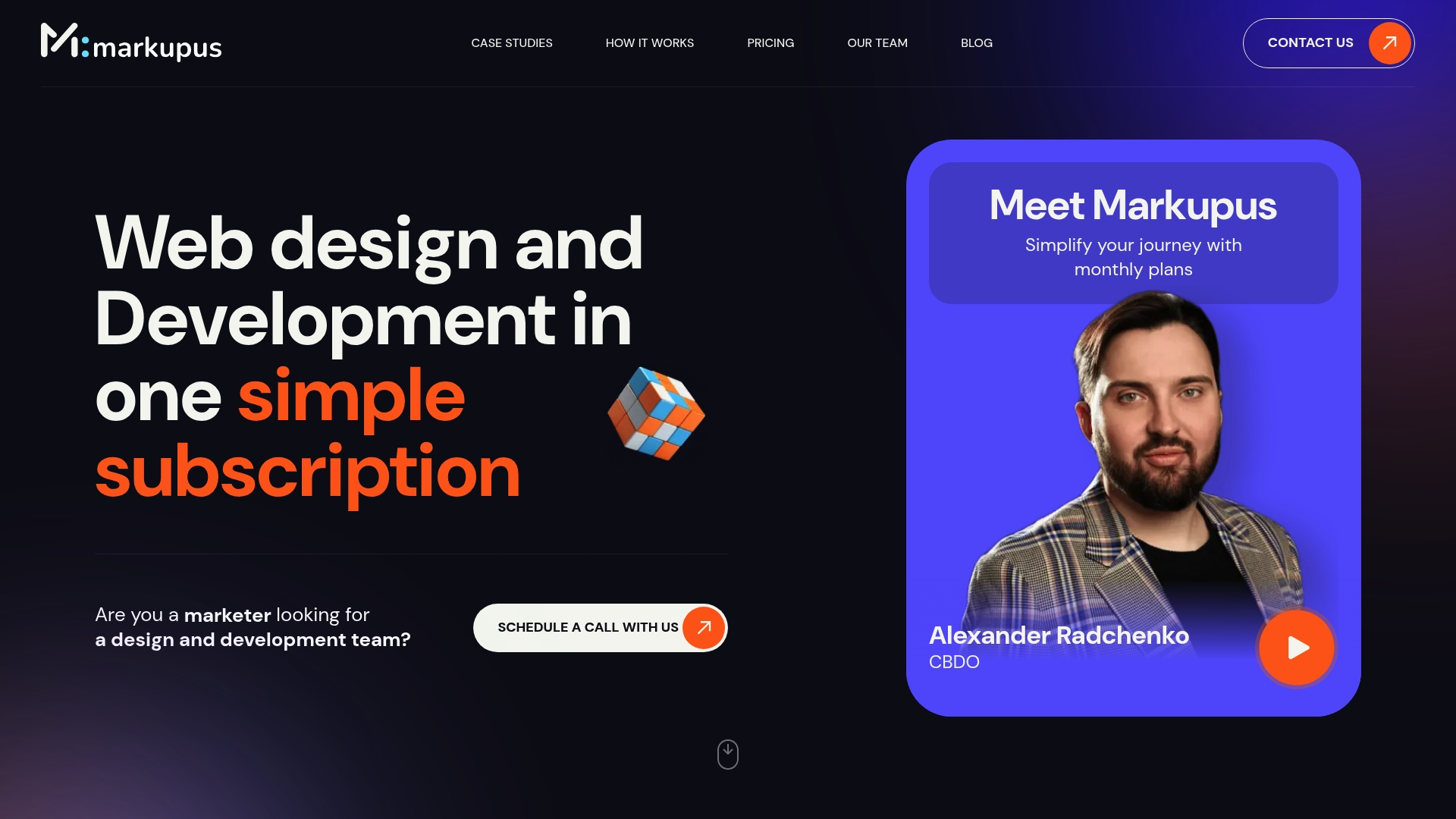Did you know that users form an opinion about a website in just fifty milliseconds? First impressions online shape whether visitors trust your brand and stay engaged. The way your website looks and works matters more than ever, as thoughtful web design can guide users effortlessly, build brand credibility, and even lift conversion rates. Discover how modern design strategies help businesses create digital spaces that stand out and deliver results.
Table of Contents
- Defining Web Design And Its Critical Role
- Web Design Variations For Modern Businesses
- Impact On User Experience And Conversions
- Building Brand Trust Through Design
- Technical SEO And Performance Implications
Key Takeaways
| Point | Details |
|---|---|
| Comprehensive Web Design | Effective web design integrates aesthetics, user experience principles, and functional requirements to enhance overall digital interaction. |
| User-Centric Approach | Modern web design should prioritize user needs through collaborative processes, creating personalized and adaptive interfaces. |
| Impact on Brand Trust | A visually appealing and consistent design fosters credibility and trust, turning visitors into loyal customers. |
| Technical Performance | Optimizing web performance, including fast load speeds and responsive design, is essential for improving user engagement and SEO. |
Defining Web Design And Its Critical Role
Web design is the strategic process of conceptualizing, planning, and creating digital interfaces that communicate a brand’s message while delivering exceptional user experiences. According to information architecture research, this discipline involves structuring shared digital environments to enhance usability and findability for users.
At its core, web design transcends mere visual aesthetics. It encompasses a comprehensive approach that integrates visual elements, user experience principles, and functional requirements to create compelling digital platforms. The Role of Design in E-Commerce: Complete Guide highlights how thoughtful design directly impacts user engagement and conversion rates.
Key components of effective web design include:
- Intuitive navigation structures
- Responsive layouts that adapt across devices
- Clear visual hierarchies
- Consistent branding elements
- Performance optimization
Research from WebML methodology emphasizes that modern web design is a structured process requiring meticulous planning. Successful web design isn’t just about looking good—it’s about creating digital experiences that solve user problems, communicate brand values, and guide visitors seamlessly toward their desired outcomes.
Here’s a summary comparing key web design components and their impact:
| Design Aspect | Importance for UX | Impact on Conversion | Effect on Branding |
|---|---|---|---|
| Intuitive Navigation | High | Guides users | Reinforces professionalism |
| Responsive Layouts | Essential | Reduces bounce rate | Shows modern adaptability |
| Visual Hierarchy | Clarifies content | Directs attention | Supports brand values |
| Consistent Branding | Builds trust | Encourages retention | Strengthens identity |
| Performance | Maintains interest | Boosts conversions | Demonstrates reliability |
Web Design Variations For Modern Businesses
Modern businesses are increasingly recognizing that web design is not a one-size-fits-all approach. According to participatory design research, successful digital strategies now involve collaborative design processes that integrate stakeholder perspectives and user needs directly into the development workflow.
Web design variations have emerged to address the complex requirements of different business models and digital ecosystems. The 7 Modern Website Design Tips Every SaaS Brand Needs Now highlights how adaptive design strategies can transform digital experiences across industries.
Key design variations include:
- Collaborative design approaches
- User-centered interface development
- Adaptive and responsive frameworks
- Modular design systems
- Personalization-driven interfaces
Research from metadesign frameworks suggests that contemporary web design must create infrastructures supporting continuous adaptation. This means moving beyond static websites to dynamic, interactive platforms that evolve with user expectations, technological advancements, and changing business goals. The future of web design lies in creating flexible, intelligent systems that can seamlessly adjust to emerging digital landscapes.
Impact On User Experience And Conversions
Web design directly influences user experience and conversion rates through carefully crafted digital interactions. Research on mobile application UX design demonstrates that strategic design principles can significantly impact user retention and conversion performance across digital platforms.
Conversion optimization requires a delicate balance between visual appeal and functional clarity. The 7 Essential Website Design Checklist Tips for SaaS Success underscores how intentional design elements can guide users seamlessly through conversion funnels.
Key factors influencing user experience and conversions include:
- Intuitive navigation pathways
- Clear value proposition communication
- Minimal cognitive load
- Fast page loading speeds
- Strategic call-to-action placement
- Mobile responsiveness
According to advanced UX research, visual intensity plays a critical role in user engagement. Empirical studies reveal that negative user responses increase exponentially when visual elements become too complex, highlighting the importance of creating balanced, user-centric design experiences that smoothly guide potential customers toward desired actions without overwhelming them.
Building Brand Trust Through Design
Web design serves as a powerful visual language for communicating a brand’s core values and establishing credibility. According to the aesthetic-usability effect, more visually appealing designs are perceived as more intuitive and trustworthy, creating an immediate positive impression on potential customers.
The Modern Web Design Steps for Reliable Business Sites emphasizes how strategic design elements can transform a website from a mere digital presence into a compelling brand storytelling platform. Much like corporate architecture uses physical spaces to project organizational identity, web design acts as a digital representation of a company’s personality and professional ethos.
Key strategies for building brand trust through design include:
- Consistent color palette and visual branding
- Clean, professional typography
- High-quality, authentic imagery
- Transparent and easily accessible information
- Responsive and accessible design across devices
- Clear communication of brand values
Trust is built through subtle visual cues that demonstrate professionalism, reliability, and attention to detail. By crafting a design that feels both sophisticated and approachable, businesses can create digital experiences that resonate emotionally with their target audience, transforming casual visitors into loyal customers.
Technical SEO And Performance Implications
Web performance is the cornerstone of successful digital experiences, directly influencing both search engine rankings and user engagement. Research reveals that page load speed and responsive design are critical factors in maintaining user interest and driving conversions.
The Master Responsive Design Workflow for Modern Web Teams highlights the intricate relationship between technical optimization and user experience. Search engines like Google prioritize websites that deliver fast, seamless interactions across multiple devices and platforms.
Key technical SEO and performance considerations include:
- Optimized image and asset compression
- Minimized HTTP requests
- Server-side rendering capabilities
- Mobile-first design approach
- Clean, semantic HTML structure
- Efficient JavaScript and CSS loading
- Leveraging browser caching mechanisms
Technical performance goes beyond mere speed metrics. It represents a holistic approach to creating digital experiences that are not just fast, but intelligently structured to meet both user expectations and search engine requirements. By investing in robust technical foundations, businesses can create websites that are not only discoverable but also deliver exceptional user experiences that convert and retain visitors.
Elevate Your SaaS Business With Expert Web Design Solutions
Understanding the critical role web design plays in user experience and conversions is essential for SaaS brands aiming to stand out. The article highlights common challenges like creating intuitive navigation, responsive layouts, and clear calls-to-action that engage users without overwhelming them. If you want to solve these pain points effectively, embracing a design strategy built on modern frameworks and AI-powered tools can transform your digital presence.
Markupus specializes in delivering precisely this kind of cutting-edge web development and design tailored for the e-commerce niche, with strong SaaS potential. By leveraging ReactJS, NextJs, and intelligent automation with n8n alongside advanced large language models like OpenAI and Claude, we build dynamic, adaptive websites focused on performance, trust, and conversion. Explore how we integrate responsive design and technical SEO mastery to elevate brand credibility and user engagement at our website and get started with custom web development and design solutions.
Looking for a proven partner in shaping your SaaS brand’s digital experience Why wait to boost your conversions and build lasting brand trust Visit Markupus today to discover tailored strategies that meet your unique needs
Frequently Asked Questions
What is the importance of web design for SaaS businesses?
Effective web design is crucial for SaaS businesses as it enhances user experience, increases engagement, and ultimately drives conversion rates. A well-designed website communicates the brand’s message clearly and effectively guides users through the conversion funnel.
How does responsive design impact user experience?
Responsive design ensures that a website adapts to various devices and screen sizes, providing a consistent and user-friendly experience. This adaptability is essential for retaining users and reducing bounce rates, especially as more people access websites from mobile devices.
What key components are necessary for successful web design?
Successful web design incorporates intuitive navigation, responsive layouts, visual hierarchy, consistent branding, and performance optimization. These elements work together to create a compelling and user-centered digital experience.
How does web design contribute to building brand trust?
Web design helps establish brand trust through consistent visual branding, high-quality images, and professional presentation. A well-crafted design communicates the brand’s values and credibility, making visitors more likely to engage and convert.







